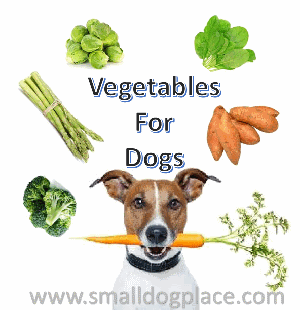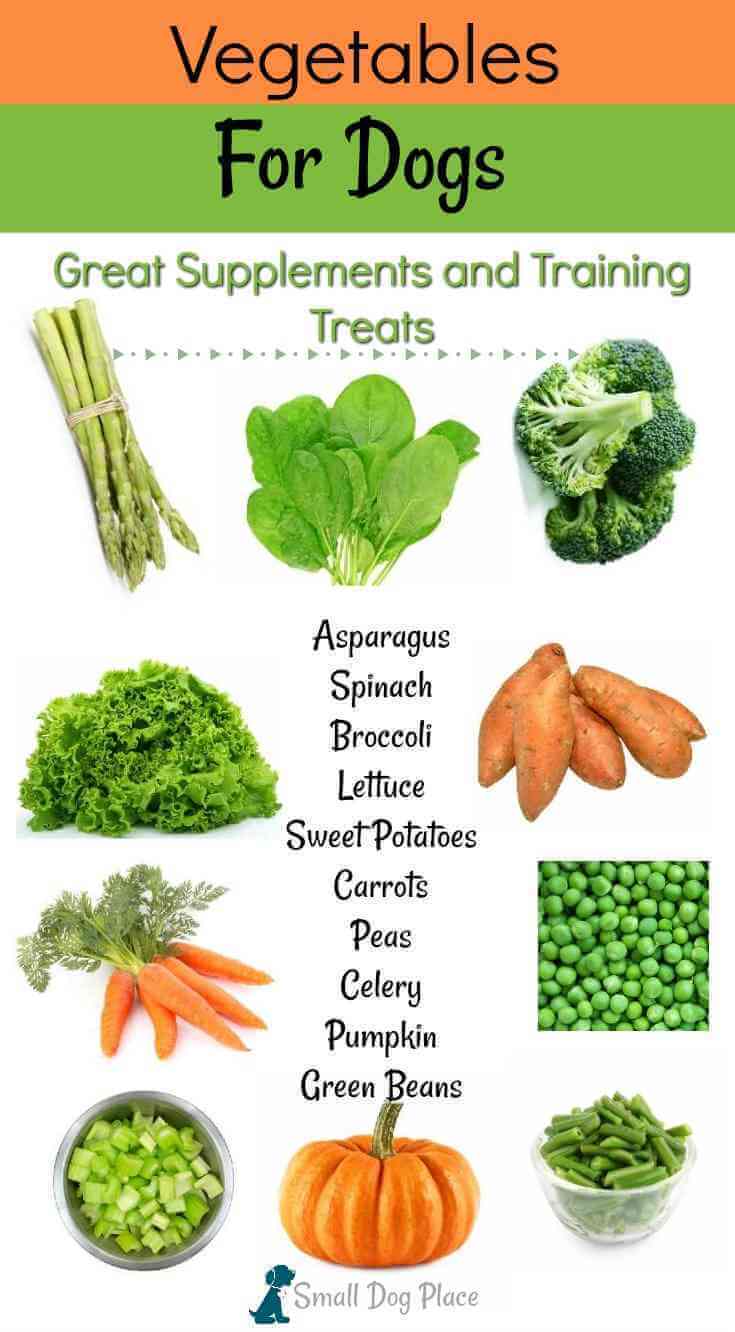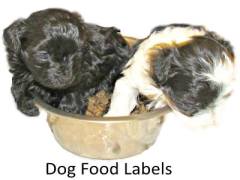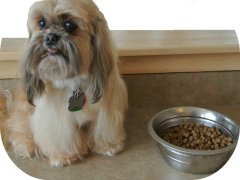- Small Dog Place Home
- Feeding
- Vegetables for Dogs
Vegetables for Dogs: Top 20 Choices
By Janice Jones | Updated December 2025
Vegetables can be a healthy, low-calorie way to supplement your dog’s diet and add variety without relying on highly processed treats.
When chosen carefully and served in appropriate portions, many vegetables provide fiber, moisture, and beneficial nutrients that support overall wellness.
That said, not all vegetables are safe for dogs, and even healthy options should be offered thoughtfully. Portion size, preparation method, and your dog’s age, size, and individual tolerance all matter.
This guide answers common questions dog owners have, including:
- Which vegetables are safe for dogs to eat
- Which vegetables should be avoided
- How much is too much
- How to prepare vegetables safely for dogs
There’s an essential difference between offering a small, nutritious vegetable treat and feeding table scraps. The goal is to supplement a balanced diet, not replace it.
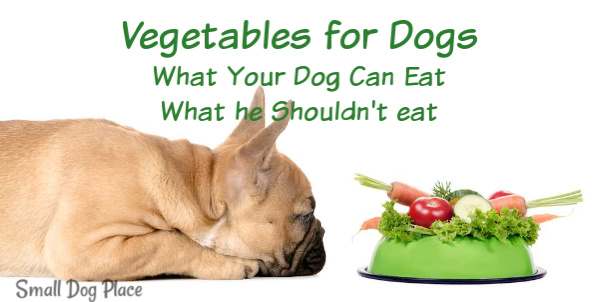
Disclaimer
Vegetables should be fed as occasional treats or dietary supplements, not as a replacement for a complete and balanced dog food. As a general guideline, vegetables and fruits should make up no more than 10% of a dog’s daily calorie intake.
If your dog has food sensitivities, digestive issues, chronic health conditions, or is on a prescription diet, consult your veterinarian before introducing new foods. Puppies, senior dogs, and tiny breeds may be more sensitive to dietary changes and should be introduced to new foods slowly and in small amounts.
Important Nutrition & Safety Note
Vegetables should be fed as occasional treats or dietary supplements, not as a primary food source.
As a general guideline, vegetables and fruits should make up no more than 10% of a dog’s daily calorie intake.
If your dog has food sensitivities, digestive issues, chronic medical conditions, or is on a prescription diet, consult your veterinarian before introducing new foods.
Puppies, senior dogs, and tiny breeds may be more sensitive to dietary changes and should be introduced to new foods slowly.
Do Dogs Need Vegetables?
Dogs are facultative carnivores, meaning they thrive primarily on animal-based nutrition but can digest and benefit from small amounts of certain plant foods.
A high-quality commercial dog food is designed to be nutritionally complete. Vegetables are optional, but they can:
- Add fiber to support normal digestion
- Increase moisture intake
- Provide variety and enrichment
- Serve as low-calorie training treats
Vegetables should never replace protein or fat as primary sources of calories.
Nutrients Vegetables Can Provide
When fed appropriately, vegetables may contribute:
- Dietary fiber
- Antioxidants
- Vitamins and minerals
- Water content for hydration
They are not intended to treat disease but may support overall health as part of a balanced diet.
Vegetables Used as Training Treats
While we may know our dog well and worry about their health, do we really need anything else other than dog food? Most dog owners will provide additional treats to their dog. When training for the first time, training treats are often used as a motivator.
Rather than purchasing ready made treats, tiny bits of carrots and apples can be used instead of manufactured treats that are questionable in quality and safety.
Let's face it people who are very concerned about their dog's nutrition may forget to look on the labels of pet treats. Many treats come from questionable sources, contain questionable ingredients, and may have no nutritional value at all.
We’ve also put together a list of foods dogs should not eat. Do check that out as not all vegetables are healthy and safe for dogs.
You’ll also find the calorie content of these foods and a way to decide how to incorporate them into your fur friend’s daily diet.
Vegetables Safe for Dogs of All Sizes
Here's our list of 20 vegetables dogs can enjoy.
Vegetable for Dogs: Asparagus?

Asparagus
1 spear ≈ 3 calories
Benefits
- Low calorie
- Contains fiber
Risks & Limits
- Tough stalks can be hard to digest
- Overfeeding may cause GI upset
Preparation
- Steam or boil until soft
- Remove woody ends
- Chop into small pieces
Avoid
- Raw asparagus
- Seasonings or oils
Bell Peppers (Red, Yellow, Orange)
Bell peppers are safe for dogs and are one of the better vegetable options when fed in moderation. Red bell peppers are the most nutrient-dense, but all colors are safe.
Bell Peppers
1–2 small strips ≈ 5 calories
Benefits
- Fiber
- Low-calorie and hydrating
Risks & Limits
- May cause mild stomach upset in sensitive dogs
- Seeds and stems can be irritating
Preparation
- Remove seeds and stem
- Serve raw or lightly cooked
- Cut into small strips
Avoid
- Hot peppers (jalapeños, chili peppers)
- Seasoned or sautéed peppers
Beets
Beets are safe for dogs when cooked and served in small portions. They are naturally sweet and should be considered an occasional treat rather than a dietary staple.
Beets
1 tablespoon cooked ≈ 9 calories
Benefits
- Fiber
- Natural antioxidants
Risks & Limits
- High natural sugar content
- May discolor urine or stool
- Can contribute to loose stools if overfed
Preparation
- Boil or roast until soft
- Peel and dice finely
Avoid
- Raw beets
- Pickled or seasoned beets
Vegetables for Dogs: Broccoli?

Broccoli is safe for dogs, but it should be fed sparingly due to its potential to cause digestive upset.
Broccoli
1–2 small florets ≈ 5–10 calories
Benefits
- Fiber support
Risks & Limits
- Gas and stomach upset
- Should not exceed ~10% of daily intake
Preparation
- Steam until soft
- Serve in tiny pieces
Avoid
- Large portions
- Raw florets
Vegetables for Dogs: Brussel Sprouts?
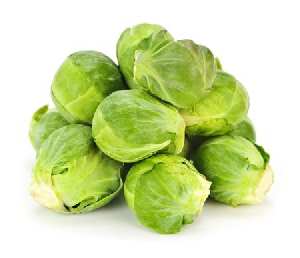
Brussels sprouts are safe for dogs in tiny amounts, but they commonly cause gas.
Brussels Sprouts
1 small sprout ≈ 8 calories
Benefits
- Fiber
Risks & Limits
- Flatulence, bloating, diarrhea
Preparation
- Steam or boil until soft
- Chop finely
Avoid
- Raw sprouts
- Frequent feeding
Cabbage (Green or Red)
Cabbage is safe for dogs when cooked and fed in moderation. Like other cruciferous vegetables, it can cause gas if served too frequently.
Cabbage
1 tablespoon cooked ≈ 3 calories
Benefits
- Fiber
- Low-calorie filler
Risks & Limits
- Flatulence and bloating
- May upset sensitive stomachs
Preparation
- Boil or steam until soft
- Chop finely
Avoid
- Raw cabbage
- Large portions
Vegetables for Dogs: Carrots

Vegetables for Dogs: Carrots
Carrots are safe for dogs and among the most commonly recommended vegetables. They are low in calories and provide fiber, making them a good option for weight-conscious dogs.
Benefits
- Supports digestive health due to fiber
- Crunchy texture may help reduce plaque buildup
Risks & Limits
- Too many carrots may cause gas or loose stools
- Always cut into small pieces for toy and small breeds
Preparation
- Serve raw or lightly cooked
- Chop or grate for small dogs
- No salt, butter, or seasoning
What to Avoid
- Large chunks that pose a choking risk
- Excessive portions
Vegetables for Dogs: Cauliflower?
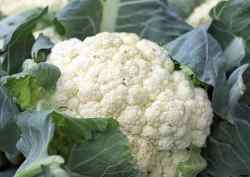
Cauliflower is safe for dogs but should be fed occasionally.
Cauliflower
1 floret ≈ 4 calories
Benefits
- Fiber
Risks & Limits
- Gas and bloating
Preparation
- Steam or boil
- Cut into small pieces
Avoid
- Raw florets
Vegetables for Dogs: Celery

Celery is safe for dogs but provides minimal nutrition.
Celery
4-inch piece ≈ 1 calorie
Benefits
- Hydration
- Crunchy texture
Risks & Limits
- Stringy texture can cause choking
Preparation
- Remove strings
- Chop very small
Avoid
- Large raw pieces
Vegetables for Dogs: Cucumbers?
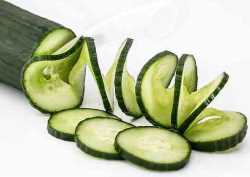
Cucumbers are safe for dogs and are mostly water.
Cucumbers
1 slice ≈ 1 calorie
Benefits
- Hydration
- Very low-calorie
Risks & Limits
- Diarrhea if overfed
Preparation
- Peel and slice thin
Avoid
- Pickled cucumbers
Vegetables for Dogs: Green Beans

Green beans are safe for dogs and commonly used in weight control.
Green Beans
½ cup ≈ 6 calories
Benefits
- Fiber
- Low-calorie filler
Risks & Limits
- Excess may cause gas
Preparation
- Raw or cooked
- Chop for small dogs
Avoid
- Canned beans with salt
Kale (Small amounts only)
Kale is safe for dogs in very small amounts, but it should be fed sparingly. While nutrient-dense, kale contains compounds that can cause digestive upset and may interfere with thyroid function if overfed.
Kale
1 tablespoon cooked ≈ 3 calories
Benefits
- Fiber
- Low calorie
Risks & Limits
- Can cause gas and bloating
- Contains goitrogens and oxalates
- Not ideal for dogs with thyroid or kidney issues
Preparation
- Lightly steam or sauté without oil
- Chop finely
Avoid
- Raw kale
- Large or frequent servings
Vegetables for Dogs: Lettuce

Lettuce is safe for dogs but offers little nutritional value.
Lettuce
1 leaf ≈ 1 calorie
Benefits
- Hydration
Risks & Limits
- Diarrhea if overfed
Preparation
- Wash and chop
Avoid
- Large leaves
Vegetables for Dogs: Peas?
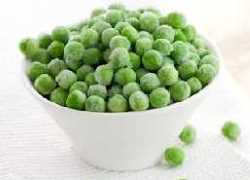
Peas are safe for dogs when fed in moderation.
Peas
⅛ cup ≈ 15 calories
Benefits
- Fiber
- Plant protein
Risks & Limits
- Excess may contribute to GI upset
Preparation
- Cooked or thawed frozen
Avoid
- Seasoned peas
Vegetables for Dogs: Pumpkin

Pumpkin is safe for dogs and widely used for digestive support.
Pumpkin
1 tablespoon ≈ 5 calories
Benefits
- Stool regulation
- Fiber
Risks & Limits
- Too much may loosen stools
Preparation
- Plain canned pumpkin only
Avoid
- Pumpkin pie filling
Radishes
Vegetables for Dogs: Radishes
Radishes are safe for dogs, but they are not commonly enjoyed and should be offered only occasionally.
Radishes
1 thin slice ≈ 1 calorie
Benefits
- Crunchy texture
- Very low-calorie
Risks & Limits
- Peppery flavor may cause stomach upset
- Can irritate sensitive digestive systems
Preparation
- Wash thoroughly
- Slice very thin or grate
Avoid
- Large pieces
- Frequent feeding
Squash
Squash is safe for dogs when cooked and served plain. Both summer squash (zucchini, yellow squash) and winter squash (butternut, acorn) are acceptable.
Squash
1 tablespoon cooked ≈ 5–10 calories
Benefits
- Fiber for digestion
- Low to moderate calorie, depending on variety
Risks & Limits
- Too much may loosen stools
- Winter squash is higher in carbohydrates
Preparation
- Bake, steam, or boil until soft
- Mash or dice finely
Avoid
- Raw squash
- Butter, oil, sugar, or seasoning
Vegetables for Dogs: Sweet Potatoes?

Sweet potatoes are safe for dogs when cooked.
Sweet Potatoes
1 tablespoon ≈ 13 calories
Benefits
- Fiber
- Slow-release carbohydrates
Risks & Limits
- High calorie intake if overfed
Preparation
- Baked or boiled plain
Avoid
- Raw sweet potatoes
Vegetables for Dogs: Turnips, Rutabagas and Parsnips
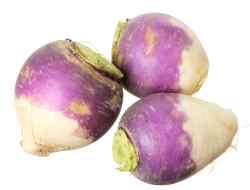
These root vegetables are safe for dogs when cooked.
Root Vegetables
1 tablespoon ≈ 10–20 calories
Benefits
- Fiber
Risks & Limits
- Gas if overfed
Preparation
- Boil or steam
- Mash or dice small
Avoid
- Large raw chunks
Vegetables for Dogs: Zucchini / Courgette
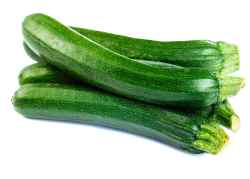
Zucchini is safe for dogs and well-tolerated.
Zucchini
1 cup ≈ 20 calories
Benefits
- Hydration
- Low calorie
Risks & Limits
- Minimal; overfeeding may soften stools
Preparation
- Raw or cooked
- Serve plain
Avoid
- Breads or seasoned dishes
Vegetables That Require Caution
Spinach

Spinach is safe for dogs in small amounts.
Spinach
1 tablespoon cooked ≈ 3 calories
Benefits
- Fiber
Risks & Limits
- Oxalates may affect the kidneys if overfed
Preparation
- Lightly cooked
- Chop finely
Avoid
- Large or frequent servings
Tomatoes
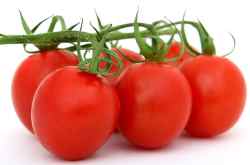
Ripe tomatoes are safe for dogs in small amounts.
Tomatoes
1 slice ≈ 4 calories
Benefits
- Hydration
Risks & Limits
- Green parts are toxic
Preparation
- Serve ripe only
Avoid
- Leaves, stems, unripe tomatoes
White Potatoes

Potatoes are safe for dogs only when fully cooked.
White Potatoes
1 tablespoon ≈ 11 calories
Benefits
- Easily digestible starch
Risks & Limits
- High glycemic load
- Raw potatoes are toxic
Preparation
- Boiled or baked plain
Avoid
- Raw potatoes
- Skins, sprouts
Vegetables Your Dog Should NOT Eat
This list includes fruits and vegetables that you should not give to your dog. A more comprehensive list of foods toxic to dogs can be found here.
- Onions, shallots, scallions, and garlic
- Rhubarb (May Cause Renal Failure)
- Wild Mushrooms (Not all mushrooms are toxic, but best to avoid them to be safe)
- Green Tomatoes, Tomato Stalks and leaves (Red tomato are fine)
- Avocados
- Grapes and Raisins or Currants
Hints for Feeding Vegetables for Dogs
- Always core apples before giving the fleshy part to your dogs. Don't feed seeds.
- Many dogs love raw carrots, but if yours does not, steam or boil them slightly.
- Always remove seeds from fruit before giving them to your dog.
- Keep treats down to about 10% of your dog’s total daily food intake.
- If your dog makes a mess with mushy bananas, pop some slices in the freezer and offer them frozen. (Makes a great summer treat)
- You can offer vegetables raw (unless otherwise noted), slightly steamed, boiled, or baked; sliced, diced or pureed.
- Think your dog would benefit from vegetables or fruit, but they won’t give them a try? Try a spoonful of vegetable baby food mixed with his regular food.
- Watch your dog’s stools after giving vegetables. If diarrhea develops or he appears to defecate more frequently and in larger quantities, reduce the amount of vegetables you are providing.
Adding Vegetables for Dogs to Normal Diets
The average small 10 pound dog needs less than 375 calories per day. (More for pregnant and lactating females and less for weigh loss) Very active dogs will need additional calories.
Check your dog’s food package to determine how many calories he is getting from his normal food. Adjust any of these fruits and vegetables for dogs snacks accordingly.
More information on calculating caloric intake.
Additional References Used in Vegetables for Dogs
https://blog.homesalive.ca/health-benefits-of-pumpkin-for-dogs
https://www.healthline.com/
https://www.nutritionadvance.com/
https://www.akc.org
If you Enjoyed this Page on Vegetables for Dogs, may we Suggest...
Dog Food Labels
Do you know what you're feeding your small dog. Learn to read Dog Food Labels to be an informed consumer. There's more than meets the eye..
Read More...Small Dog Nutrition
A savvy small dog parent should know what their fur baby needs for optimal health. Learn about dog nutrition as it applies to small dogs.
Read More...About Janice (author and voice behind this site)
Janice Jones has lived with dogs and cats for most of her life and worked as a veterinary technician for over a decade. She has also been a small-breed dog breeder and rescue advocate and holds academic training in psychology, biology, nursing, and mental health counseling. Her work focuses on helping dog owners make informed, responsible decisions rooted in experience, education, and compassion.
When not writing, reading, or researching dog-related topics, she likes to spend time with her six Shih Tzu dogs, her husband, and her family, as well as knitting and crocheting. She is also the voice behind Miracle Shih Tzu and Smart-Knit-Crocheting
Does This Article Deserve Your Thumbs Up?
We always appreciate your support and encouragement. Your thumbs up means so much to us. Please like this article.
If you find this page or any page on Small Dog Place Helpful, or useful in anyway, I'd love it if you would click the small heart found on the bottom right of each page.
You can also share or bookmark this page -- just click on the:

Free Monthly Newsletter
Sign Up for Our Free Newsletter and get our Free Gift to You.
my E-book, The Top 10 Mistakes People Make When Choosing a Dog (and how to avoid them)
